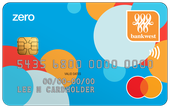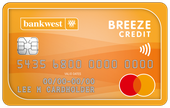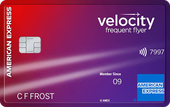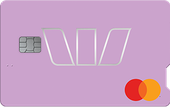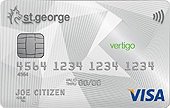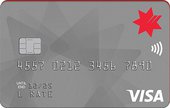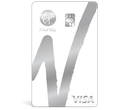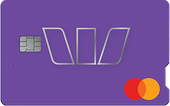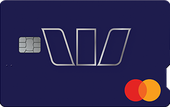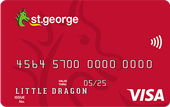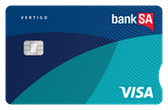What are low income credit cards?
You can still be eligible for a credit card if you have a low income, but your options may be more limited compared to someone with a higher income. Many credit cards have minimum income requirements, with some starting as low as $15,000 per year.
However, even if a credit card doesn’t specify a minimum income, you’ll still need to meet the lender's broader eligibility criteria, which may include factors such as credit history, employment status, and ability to manage repayments.
Low income credit cards are typically basic, no-frills options that are more accessible to individuals with lower incomes. While they may not offer the premium perks found on higher-end cards, such as frequent flyer points, complimentary travel insurance, or airport lounge access, they can still serve as useful financial tools.
These cards often come with lower annual fees and interest rates on purchases, which can help you manage costs more effectively. They may be a suitable option if you're primarily looking for a credit card to cover everyday expenses without incurring high fees or interest charges.
Expert opinion on choosing a low income credit card
What to consider before applying for a low income credit card
- Minimum income requirements. Check if the card lists a specific minimum income requirement. Be sure to verify what types of income are accepted, as some providers might not count certain government benefits payments. If no income is specified, check other eligibility criteria, such as credit score and the minimum credit limit available.
- Fees. Look for cards with low or no annual fees to keep costs low. It’s also important to be aware of other fees, such as late payment fees, cash advance fees, and international transaction fees. Minimising fees is essential for managing your budget effectively on a low income.
- Interest rates. Low income credit cards often come with lower interest rates on purchases, an especially important feature if you can’t pay your balance in full every month.
- Interest-free days. Cards typically offer up to 44 or 55 interest-free days on purchases, but only if you pay your balance in full each month. Choosing a card with more interest-free days gives you a little extra time to manage your payments without incurring interest.
- Benefits. Low income cards generally don’t come with premium perks, so don't expect to see many points-earning cards or cards with travel benefits.
Credit Card Compare expert on what to look out for

David Boyd, co-founder of Credit Card Compare, explains what you should look out for before applying for a credit card, especially if you are a low income earner.
Before applying for a credit card, check what its eligibility criteria are. Where possible, we try and make it clear how much income is required to be eligible on Credit Card Compare. The more features a card has like earning rewards, travel insurance, and lounge access, the higher the minimum income tends to be.
Do not risk applying until you know you earn enough to qualify and that you can prove it. If in doubt, contact the issuer first, confirm how much income is needed, check your credit report, and then apply.
How to manage a credit card wisely
Managing a credit card responsibly on a low income requires careful planning and disciplined spending.
- Use your credit card for essential expenses only. Focus on using your card for necessary purchases, like groceries or bills, rather than discretionary spending. This helps you stay within your budget and prevents your balance from growing too quickly.
- Avoid carrying a balance. If possible, try to pay off your full balance each month. Carrying a balance means you'll incur interest charges, which can add up quickly, especially with high interest rates. If paying in full isn’t feasible, always aim to make payments on time to avoid late fees.
- Create a repayment plan if you carry a balance. Set a realistic budget that allows you to pay off as much of your balance as possible each month. Aim to pay more than the minimum to reduce interest charges and clear the debt faster.
- Be mindful of your credit limit. Try to keep your balance well below your credit limit. Not only does this avoid getting charged for accidentally going over your limit, but staying under 30% of your credit limit can also positively impact your credit score because it keeps your credit utilisation ratio down.
- Set reminders for payments. Missing a payment can lead to late fees and damage your credit score. Setting up calendar reminders or automatic payments will help ensure you stay on top of your credit card bills and avoid penalties.
Expert opinion: Is getting a credit card worth it for low income earners?

Andrew Boyd, co-founder of Credit Card Compare, shares his opinion on whether it's worth getting a credit card if you are a low income earner.
Getting a credit card isn't just useful for everyday spending. It can be used tobuild up your credit score and having a good credit score is important because it opens the door to a range of financial opportunities in the future such as buying a car or home.
Benefits of low income credit cards
Low income credit cards are designed to help individuals manage their finances while keeping costs low.
- Low annual fees. Low or no annual fees are a common feature, making them more affordable to hold compared to premium cards.
- Lower interest rates. Low income credit cards typically come with lower purchase interest rates compared to premium cards (because they usually don't earn rewards points or have other benefits). This means that if you carry a balance, the interest charged on that balance will be lower, reducing your overall debt accumulation.
- Access to credit. While credit limits may be on the lower side, this can help you manage your spending more responsibly.
- Simplified features. Low income credit cards usually come without complicated rewards programs or added perks, making them straightforward to use. This simplicity can be beneficial, especially if you're considering applying for your first credit card.
- Build or improve credit history. Responsible use of a credit card — such as making regular payments and keeping balances low — can help improve your credit score over time. With a better credit score, you may be eligible for a car or home loan or higher credit limits in the future.
